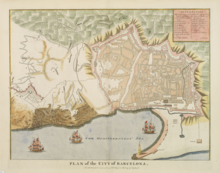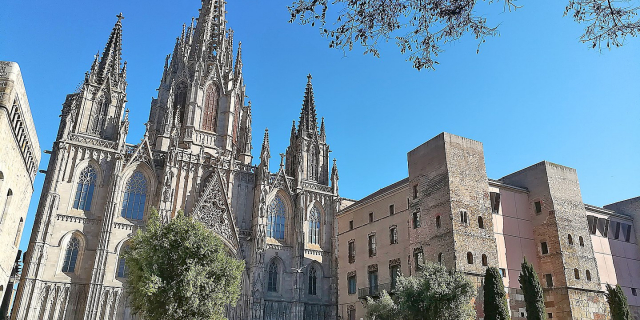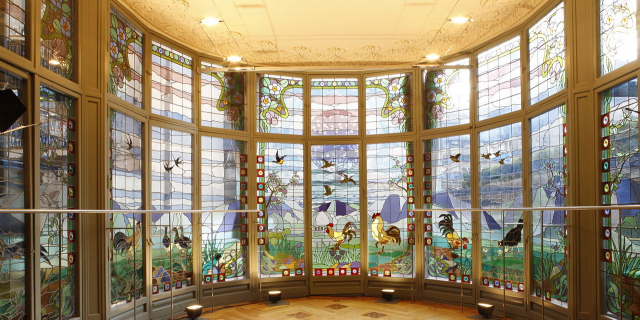La Rambla (Catalan pronunciation: [lə ˈramblə]) is considered the most well known street in central Barcelona. A tree-lined pedestrian street, it stretches for 1.2 kilometres (3⁄4 mile) connecting the Plaça de Catalunya in its center with the Christopher Columbus Monument at Port Vell. La Rambla forms the boundary between the neighbourhoods of the Barri Gòtic to the east and the El Raval to the west.
La Rambla can be crowded, especially during the height of the tourist season. It hosts a combination of eateries, shops, markets, and cultural institutions.
The Spanish poet Federico García Lorca once said that La Rambla was "the only street in the world which I wish would n...Read more
La Rambla (Catalan pronunciation: [lə ˈramblə]) is considered the most well known street in central Barcelona. A tree-lined pedestrian street, it stretches for 1.2 kilometres (3⁄4 mile) connecting the Plaça de Catalunya in its center with the Christopher Columbus Monument at Port Vell. La Rambla forms the boundary between the neighbourhoods of the Barri Gòtic to the east and the El Raval to the west.
La Rambla can be crowded, especially during the height of the tourist season. It hosts a combination of eateries, shops, markets, and cultural institutions.
The Spanish poet Federico García Lorca once said that La Rambla was "the only street in the world which I wish would never end."
 Barcelona around 1700, showing La Rambla running down the city center and flanked by the old city wall on its right.
Barcelona around 1700, showing La Rambla running down the city center and flanked by the old city wall on its right.The course of La Rambla was originally a sewage-filled stream,[1] usually dry but an important drain for the heavy rainwater flowing from the Collserola hills during spring and autumn. (Rambla, from the Arabic رمل 'sand', is Catalan for "wadi". The name of the city of Ramla in Israel is derived from the same origin).[2] It separated the walled city on its north-east bank from the settlements of El Raval ("the suburb") on its south-west.[3]
In the year 1377, construction started on an extension of the city walls to include La Rambla and El Raval. In 1440, the stream was diverted to run outside the new walls, and La Rambla gradually started turning into a street.[4]
Over the next few centuries, La Rambla became an established center of Barcelona's urban life, serving as a long wide thoroughfare used for festivals, markets, and sports. Several large religious establishments were also built along the street during this period. These include the Jesuit Bethlehem monastery and college (1553), of which just the later church remains; the Carmelite St. Joseph's monastery, on the site of the current Boqueria market; and a Capuchin monastery at the lower end of the street.[4]
 La Rambla in 1905
La Rambla in 1905In 1703, the first of the trees lining La Rambla were planted.[4] They were 280 birch trees and later on those were replaced by elm trees. In 1832, some acacias were planted and the currently standing plane trees started to be the common tree from 1859.[5]
Various conflicts over recent centuries took their toll on La Rambla's religious buildings, most notably the St. James's Night riots in 1835, when revolutionaries burned the monasteries and churches and killed a number of friars;[6] and the Spanish Civil War in 1936–39, when Barcelona came under the control of anarchists who again targeted religious buildings and personnel, as well as being damaged by artillery and air attacks on the area from pro-Franco forces.
Until 2010, the Rambla dels Estudis was the site of an open-air market for caged birds and other small pets. However animal protection laws made it difficult for the market to continue. After years of fighting the legislation, the market was forced to close.[7]
On 17 August 2017, many people were struck by a van deliberately driven down the sidewalk on La Rambla in a terrorist attack, causing 15 deaths and at least 100 injuries.[8]






































Add new comment